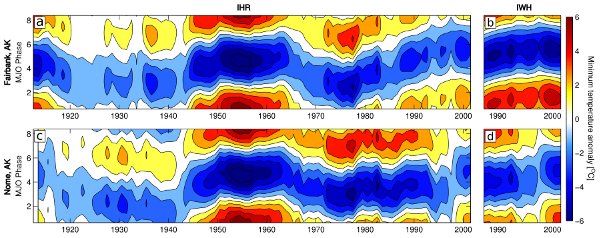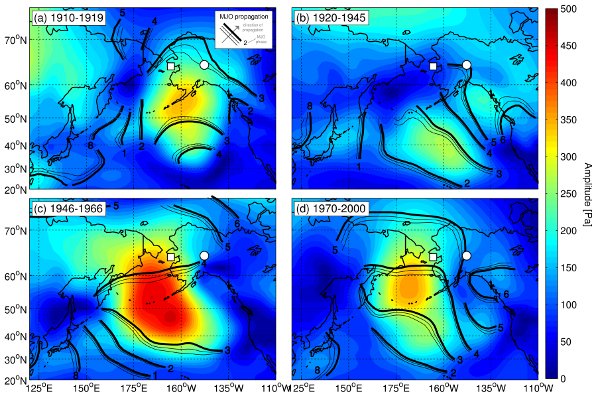|
Abstract: The Madden–Julian Oscillation (MJO), the dominant mode of intraseasonal variability in the tropics, is known to influence extratropical air temperature in the Northern Hemisphere. In particular, it has been shown that intraseasonal variations in wintertime Alaska surface air temperature (SAT) is linked with variations in cross-shore surface wind and that this mechanism is driven by a train of Rossby waves originating in the tropics due to MJO forcing. Oliver, Theoretical and Applied Climatology, 2014 show, using long station records of Alaska SAT and an independent reconstruction of the MJO index over the twentieth century, that the MJO–SAT connection in Alaska has undergone significant multidecadal variability over the last century. The Pacific Decadal Oscillation appears to explain some of the observed multidecadal variability but fails to capture a large proportion of it. We identify four distinct periods between the years 1910 and 2000 that exhibit either a weak, moderate or strong MJO–SAT connection. The nature of our method ensures that the detected multidecadal variability is due to changes in the teleconnection mechanism and not due to changes in the strength of the MJO index. Finally, we speculate on the mechanism which may bring about such multidecadal variations in the teleconnection mechanism.
|

